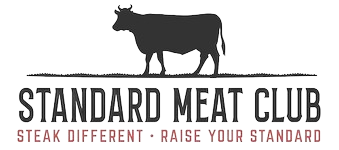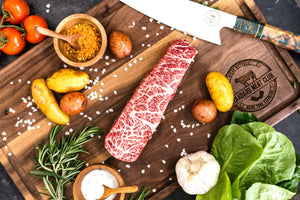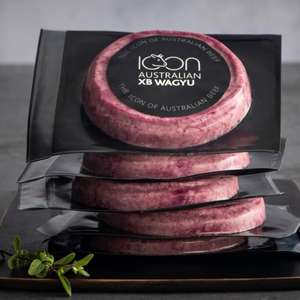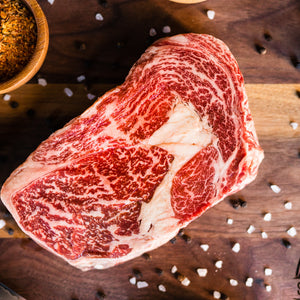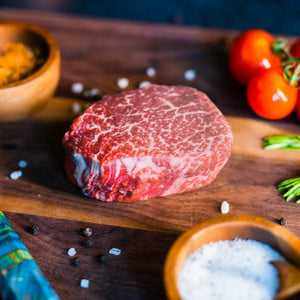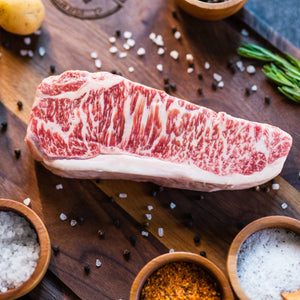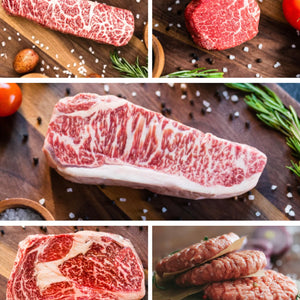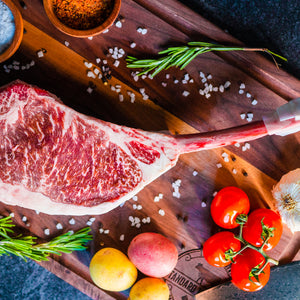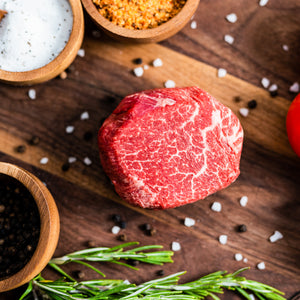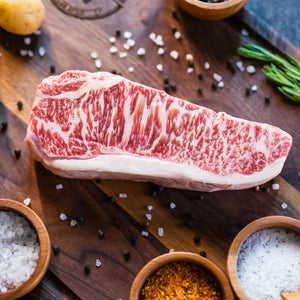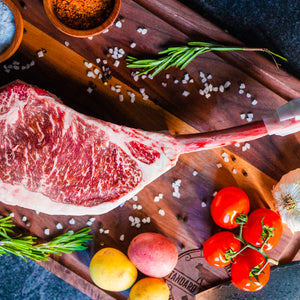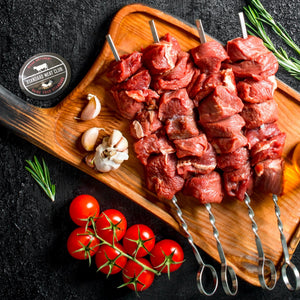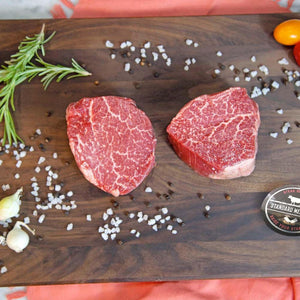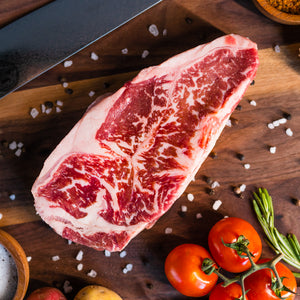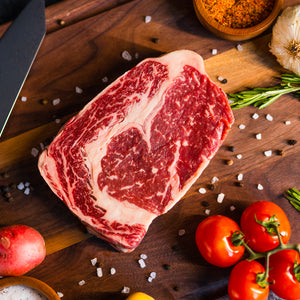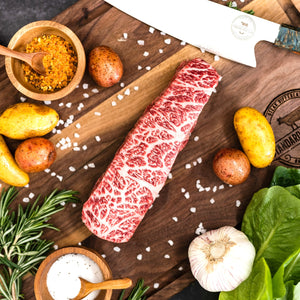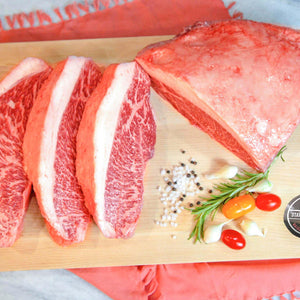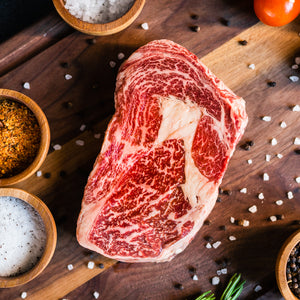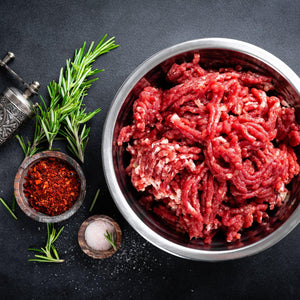What is Australian Wagyu?
Jul 15, 2022
What is Australian Wagyu?
Australia is known around the world as the largest exporter of Wagyu by volume, exporting nearly 90% of its meat each year. Renowned as a prominent location for Wagyu breeding, Australian Wagyu is famous for its bold flavor, tender texture, and its high marbling while also remaining more affordable than traditional Japanese Wagyu.
Australian Wagyu got its start with the help of researchers in the US. The many trade protections placed on Wagyu cattle, including on reproductive cells and genetic information, by the Japanese government made it virtually impossible for any other breeders in other countries to get ahold of this prized breed. However, the US government had significant trade influences in Japan post WWII, which enabled the import of genetic and live fullblood cattle. In 1976 four bulls, two black Wagyu and two red Wagyu, were sent from Japan to Colorado University where these cattle were studied extensively by different institutions, most notably Texas A&M University.
Wagyu in Australia got its start in 1989 with the birth of the Australian Wagyu Association. Unable to directly import genetics, reproductive cells, or cattle from Japan, breeders in Australia used a new back door in the world of Wagyu, the United States. Two years later, in 1991, Australia was able to insert itself into the Wagyu industry with the import of reproductive cells from the US to a select few Australian breeders creating Australia’s first crossbreed population of Wagyu. This opened the doors to further trade between the US and Australia. In 1993 New Era Genetics brought 5 more fullblood cattle to the United States, this started a flood of fullblood cattle being exported to the US. In 1994 Mr. Shogo Takega, who many consider the father of Australian Wagyu, exported five fullblood bulls and 35 females to the US with a second shipment in 1995 which brough six bulls and 45 females. Breeders in Australia began to benefit from this development and started to import the first fullblood cattle throughout 1996-1998.
From 1996-1997 over 200 cattle were exported from Japan. Due to this, in 1997, the Japanese banned Wagyu genetic and cattle exports, in order to ensure their own protection as leaders in the Wagyu market, claiming them as a national treasure. Despite this the population of fullblood and crossbreed Wagyu had already reached significant numbers in the US and Australia. Today Australia is home to the largest Wagyu population outside of Japan.
Australian Wagyu has a very similar taste to Japanese Wagyu due to precise and scientifically informed crossbreeding. A term often used in the breeding process is full blood or pureblood. Fullblood is used to describe 100% genetically pure wagyu cattle with no interference from other types of cattle. Purebred is used to describe cattle that have been crossbred, but have at least 93.75% Wagyu genetics. 95% of all Wagyu in Australia are pureblood with about 5% of Wagyu being fullblood. Australian farmers have taken a more modern approach to the breeding and raising process. By using technologies such as agricultural genomics, breeders will selectively breed cows with traits to thrive in Australia. This includes breeding for traits that suit the hot Australian climate and other desirable traits that allow the cows to need less feed and water while still producing high quality marbling. This informed crossbreeding has led to new generations of cows being highly genetically similar to the closely guarded original Japanese Wagyu cows. Because of this, the taste, marbling, and quality are very similar to the original cows raised in Japan which is why the Australian Wagyu market has become so expensive. Australian breeders attribute this technology to its high efficiency of raising these cows, which in turn leads to the lower prices of the wagyu and their newly found domination of the market. Australia has the second largest population of Wagyu, first of that being Japan, but due to this modernization of the breeding process, Australia has become the number one exporter of meat while also keeping the quality and marbling up to Japanese standards.
The differences in taste come largely from where and how the cows were raised. Much like wine, differences in the climate, soil, and native vegetation change the texture, taste, and marbling of this meat. Wagyu cattle are raised in stress free environments to reduce muscle tension which leads to tougher meat. Australia achieves this in part by using a huge natural advantage they have, space. These cows are given huge amounts of land to graze on. However the land they are grazing on varies depending on where you are raising it. The climate and soil not only varies much between Japan and Australia, but different parts of Australia can also produce different tasting meat. In the hot and humid northern parts of Australia there are many tropical grasses compared to the cooler southern parts where more traditional grasses are found. These small differences indicate how precise breeders have to be when raising these cattle. Another contributing factor to wagyu is what the cows are fed and how long the cattle are fed. Each breeder has a different formula for the feed but most often the cattle are fed a combination of specialized hay, grain, and wheat. Wagyu is considered all natural beef which increases the value and quality of the meat. Additives such as hormones, seteriods, or other drugs are never used to speed up and increase the fattening process. In Australia the cattle feed for much shorter amounts of time, about 350-450 days compared to Japanese Wagyu which is often fed for 600+ days. The longer feeding process often produces much more marbling and therefore more buttery meat, with the natural caveat that more money is poured into each cattle and it takes much longer for the farmer to cash in on each cow.
Marbling refers to the visible intramuscular fat, fat located between and within the fibers of the muscle. The high levels of marbling in Wagyu beef are particularly what make this meat so rare and sought after. The fat melts into the meat while cooking which retains the meat's tenderness and adds to the moisture and flavor of the meat. This means the texture is softer and buttery while also adding intense flavor to the meat.
Australia has two official grading systems: AUS-MEAT and Meat Standards Australia, or MSA. Both systems score the marbling from zero to nine, zero being no intramuscular fat to nine being the highest level of intramuscular fat. Australian Wagyu usually scores a seven and above on the marbling score. Following the marbling score is also a graded scale of the meat overall on a scale of A1 - A5, one being the worst and five being the best. This includes meat and fat color, marbling, fat depth, weight of the carcass, maturity, and the PH of the meat. This system of grading is much like the Japanese way of grading which also grades its meat from A1- A5, however its marbling scale goes to 12. In this fashion a bad cut of meat would be rated an A1 with a marbling score of one and a supreme cut would be rated an A5 with a marbling score of 9+.

Australian wagyu got its start from the success of Japanese Wagyu and the breeders in Australia have worked hard to make it a staple of the country. Its high quality meat, high levels of marbling, and great price are hallmarks of its success worldwide. Although it may not match the quality of authentic Japanese Wagyu, Australian Wagyu has had a large impact on markets without the expensive price tag. This makes the meat a great introduction into the world of Wagyu, with its great texture, buttery taste, and trademark marbling, without enforcing a high price tag. Despite many similarities in Japanese and Australian Wagyu, the differences in location and how the cows are raised bring differences into the texture and taste, so try both high quality meats to find out which is better for yourself!
